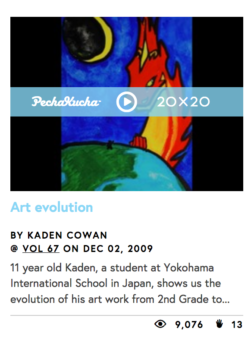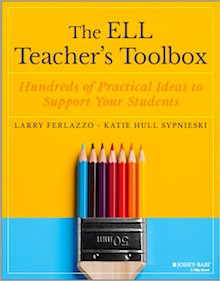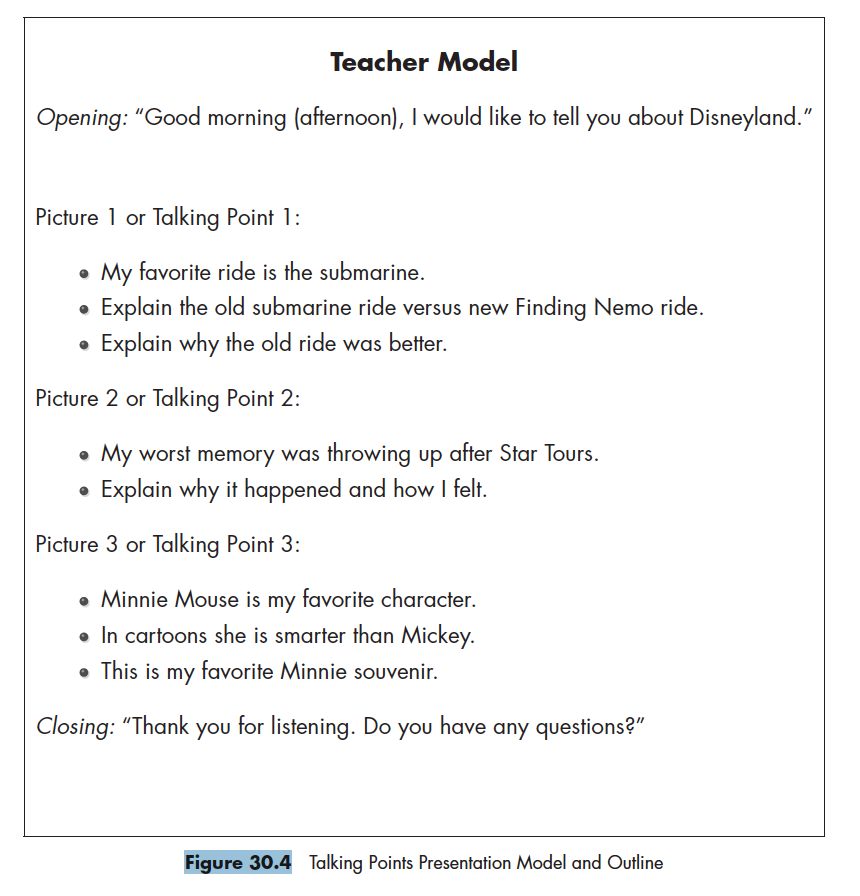4 Fun Ways to Practice Short Oral Presentations
When our book The ELL Teacher’s Toolbox was published this spring, the KQED MindShift blog published an excerpt titled “How to Use Oral Presentations to Help English Language Learners Succeed.” MiddleWeb asked to share our tips for short presentations that appear in the book right after this excerpt.
You might find it helpful to read both posts. We think our strategies for ELL students can be adapted for any group of students working to improve speaking and listening skills. ~ Larry & Katie
By Larry Ferlazzo and Katie Hull Sypnieski
Most of the time
Speed Dating
Speed dating is a quick way for students to present their work to classmates while gaining speaking and listening practice. The teacher divides students into two rows facing each other (students can be standing or seated in desks).
One row is assigned as the movers. The teacher tells students the amount of time each partner will have to speak (this depends on the length of what they are sharing). When time is up, the teacher says “switch” and the mover row stands and moves one person to the right. This can be done several times so that students can present to multiple partners. (When the movers shift, one person in the stationary row will be without a partner. Have that person move to the other end of their row.)
Students can share their work in different ways (e.g., by sharing specific parts of a mini-poster or explaining something they’ve written). To boost listening skills, we often require students to ask a question after their partner presents (sometimes providing question and answer frames).
The previous paragraphs describe individual presentations. An easy way to do speed dating after students have worked in groups to prepare joint presentations is to assign half the groups to different parts or corners of the room (they become the stationary groups). Each remaining group (who will be the movers) is assigned to start with a stationary group partner. After each of the paired groups makes its joint presentation to the other, the mover group rotates and the process repeats itself.
Talking Points Presentations
This activity is a fun way for students to practice the presentation skill of speaking from their notes, not reading from them.
In this activity, the teacher first asks students to generate a quick list of topics they know a lot about (we often have students consult their heart maps or writing territories, which are discussed in Strategy 18 of our book, “Writer’s Notebook”).
Students then choose one topic to write about for several minutes—writing anything they know or that comes to mind. The teacher can model the same process on the document camera with a topic of his or her choice.
After writing, the teacher shows students how they can use this quickwrite to create several talking points or categories by looking for ideas that they can expand upon from their original writing. For example, if they wrote about Disneyland then the categories might include “my favorite rides,” “my best memory at Disneyland,” “my worst memory at Disneyland,” or “my favorite Disney character.”
Students then choose three of their categories and draw a quick picture representing each one. For the Disneyland example, Katie modeled drawing a picture of the submarine ride, a picture of her throwing up after going on Star Tours, and a sketch of Minnie Mouse!
The teacher then gives students a simple outline and models using it as an assist while speaking for a brief amount of time (no more than two minutes). See Figure 30.4: Talking Points Presentation Model and Outline for the teacher model and the outline we used for this activity.
The teacher reinforces the difference between reading the talking points (a don’t) and speaking from the talking points (a do). Students are then given time to practice presenting using the outline as a guide—an opening, talking about each picture (using the talking points as cues), and a closing.
Students can give their presentations in small groups or in pairs (preferably with different students than they practiced with). Depending on their English proficiency level and the amount of practice they’ve had, students may or may not need to look at their outline. Listeners can be tasked with thinking of a relevant question to ask the speaker at the end of their presentation.
Top Five Presentations
This activity involves students working in groups to develop a top five list based on their interests and then preparing a short presentation to share with the class. We were introduced to the idea by ELT specialist Clare Lavery in her British Council post “Short Projects to Get Them Talking.”
In our version of the activity, we put students in groups of three and give them a few minutes to come up with three to four topics they all find interesting. Sometimes students need a few ideas to get them started so we list some examples on the board (animals, sports, music, fashion, etc.).

Students use the outline to develop their presentation ideas – to list their choices for the top five in their topic and to explain why they believe each one belongs in the top five.
We’ve found it is also helpful and enjoyable for students to create a visual aid to further communicate their points. In the past, students have created top five posters and five to seven slide PowerPoints. Students have also incorporated songs and movie clips into their presentations. We usually give groups a speaking time limit of three minutes with the requirement that each person in the group must speak during the presentation.
Students are then given time to practice their presentations. It might be necessary for the class to review our dos and don’ts for speaking and listening. The presentations can be done in front of the whole class or small groups can be paired up and present to each other. Listeners can be asked to provide feedback on a sticky note (writing something they liked about the presentation or a question they had).
PechaKucha Book Talks
PechaKucha (“chit-chat” in Japanese) is a popular presentation format in which 20 slides are shown for 20 seconds each (20 × 20) – about six and a half minutes. The slides, which usually contain one to two images and minimal text, are programmed to advance automatically as the speaker talks along with them.
In other words, each slide is used as a background or visual cue as the speakers progress through their presentation. Many language teachers use the PechaKucha presentation format because it can be easily modified. PK presentations have several advantages for ELLs—they are short, structured, highly visual, and informal.
Students can use the PechaKucha format to develop presentations on basically any topic. Teachers can adjust the time format if they want to give students more time on each slide or have students present fewer slides (e.g., 10 slides × 30 seconds each).

One variation of Pecha Kucha we’ve used in our classes was introduced to us by educator Anthony Schmidt in his helpful blog post “The Power of PechaKucha.” His modified version has students create a short PechaKucha presentation on a book they’ve read. We often have students do book talks with a partner and this is a great way to give those a different spin. Here is the outline Anthony used with his intermediate students:
Five Slide PechaKucha (2:40)
- Slide 1—10 seconds: Introduction, title of book
- Slide 2—60s: Plot, summary
- Slide 3—30s: Favorite scene, character, part
- Slide 4—60s: Evaluation and recommendation
- Slide 5—0 s: Thank you
We provided our students with this outline. Students then created their slide presentations about their books. They selected online images based on a key idea for each slide (e.g., one student chose an image of the cover of his book for Slide 1 and an image of a gold medal for Slide 4).
Because we had beginners and intermediates, we gave students the option of using sentence frames to write their notes for each slide and posted them on the front board (e.g., “The title of my book is.” “I recommend this book because.” ).
Students then printed out a copy of their PowerPoint to use for practice and sent them to us. We had one or two students present their PechaKucha book talks each day over the course of a few weeks.
Short presentations build confidence
Short presentations help us meet our goals of teaching students to develop and deliver effective oral presentations, providing them with lots of practice, and enabling them to feel empowered, not overwhelmed, by the experience.



NOW AVAILABLE: The ESL/ELL Teacher’s Survival Guide: Ready-to-Use Strategies, Tools, and Activities for Teaching English Language Learners of All Levels, 2nd Edition in April 2022.

































Great resources to help teachers’ teaching.
Really great ideas, thank you for sharing.